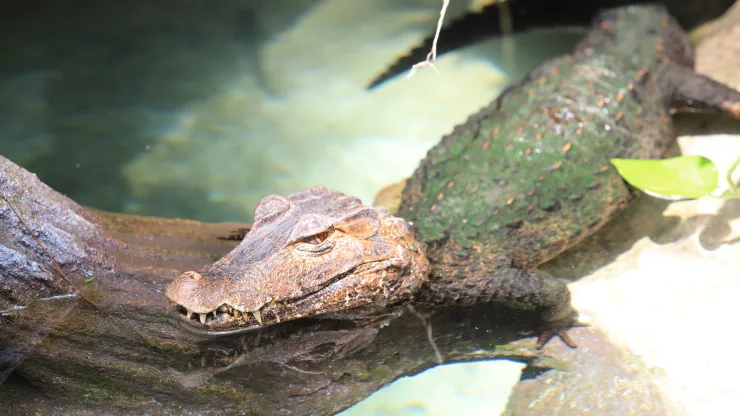Komodo dragons are fascinating creatures that captivate the imagination of people all over the world.
These unique reptiles are the largest lizards in the world and have a reputation for being fierce predators.
In this article, we’ll explore some of the most interesting facts about Komodo dragons.
1. Komodo dragons are native to Indonesia.
These lizards can be found on the islands of Komodo, Rinca, Flores, Gili Motang, and Padar.
2. They are the largest lizards in the world.
Komodo dragons can grow up to 10 feet in length and weigh up to 150 pounds.
3. They have powerful jaws and sharp teeth.
Komodo dragons have serrated teeth that can slice through flesh with ease.
4. They have a venomous bite.
Komodo dragons have venom glands that produce toxic proteins that can cause paralysis, hemorrhaging, and shock.
5. They are apex predators.
Komodo dragons are at the top of the food chain in their habitat and have no natural predators.
6. They are carnivores.
Komodo dragons feed on a variety of prey, including deer, pigs, water buffalo, and even humans.
7. They have a keen sense of smell.
Komodo dragons have a highly developed sense of smell that they use to locate prey from long distances.
8. They can run up to 13 miles per hour.
Despite their large size, Komodo dragons are surprisingly fast runners.
9. They are excellent swimmers.
Komodo dragons are adept swimmers and can swim long distances to reach other islands.
10. They are solitary animals.
Komodo dragons usually hunt and live alone, except during mating season.
11. They can live for up to 30 years.
Komodo dragons have a long lifespan and can live for up to 30 years in the wild.
12. They lay their eggs in burrows.
Female Komodo dragons lay their eggs in underground burrows to keep them safe from predators.
13. Baby Komodo dragons are vulnerable.
Baby Komodo dragons are only about a foot long and are vulnerable to predators.
14. Komodo dragons can reproduce asexually.
Komodo dragons are one of the few species that can reproduce asexually, meaning they can produce offspring without mating.
15. They are an endangered species.
Komodo dragons are classified as an endangered species due to habitat loss and human encroachment.
16. They are protected by law.
Komodo dragons are protected by Indonesian law, and it is illegal to hunt or harm them.
17. They are a popular tourist attraction.
Komodo dragons are a major tourist attraction in Indonesia, drawing thousands of visitors each year.
18. They have a forked tongue.
Like many reptiles, Komodo dragons have a forked tongue that they use to sense their environment.
19. They have a unique hunting technique.
Komodo dragons will often bite their prey and then follow it until it dies from blood loss or infection.
20. They have a strong sense of territory.
Komodo dragons are fiercely territorial and will defend their hunting grounds from other predators.
21. They have a complex social hierarchy.
While Komodo dragons are usually solitary, they will sometimes form complex social hierarchies with dominant and subordinate individuals.
22. They are a symbol of Indonesian culture.
Komodo dragons are an important cultural symbol in Indonesia, featuring prominently in art, literature, and folklore.
FAQ
What is the scientific name for Komodo dragons?
The scientific name for Komodo dragons is Varanus komodoensis.
Are Komodo dragons dangerous to humans?
While Komodo dragons have been known to attack humans, they generally avoid contact with humans and will only attack if they feel threatened.
What is the average lifespan of a Komodo dragon?
Komodo dragons can live for up to 30 years in the wild.
What is the conservation status of Komodo dragons?
Komodo dragons are classified as an endangered species due to habitat loss and human encroachment.
Where can I see Komodo dragons in the wild?
Komodo dragons can be found on the islands of Komodo, Rinca, Flores, Gili Motang, and Padar in Indonesia.
How do Komodo dragons hunt?
Komodo dragons will often bite their prey and then follow it until it dies from blood loss or infection.

I am a fun fact enthusiast and creator of Facts On Tap.
I love to share my knowledge and curiosity with readers and inspire them to learn something new every day.
When I’m not writing, I enjoy traveling, reading, and playing trivia games with my friends.




